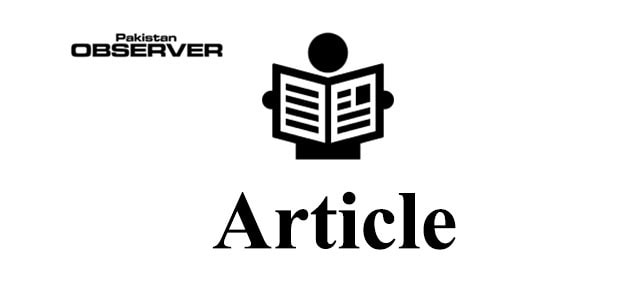Rebuilding post-flood society in Pakistan
FLOODS in Pakistan proved that Climate Change is not a myth. The systematic rise of the sudden changes in the weather patterns and urban flooding caused Pakistani society to think that the menace of climate change is becoming a reality.
In the future, Pakistan will become more vulnerable to floods and rains due to a significant rise in temperature than the global average.
The expected shift in temperature is 1.3 degree Celsius to 4.9 degree Celsius by 2090. Pakistan stands in the top 15 countries that are more exposed to Climate Change.
The death of hundreds and the economic consequences of millions of dollars in Pakistan created a significant setback to the struggling economy and governance of Pakistan.
The Post-Flood society will suffer due to poor economic growth and allocating the resources for the revitalizing infrastructure and living standards of the people.
For the Post-Flood society, it is imperative to make structural and non-structural adjustments to prevent flood hazards in the future.
The different considerable measures to take in the future for rebuilding and modifying the future susceptibility of flood damage and disruption in Pakistan are Floodplain Regulations, Flood-proofing, and Modifying Floods.
In the future, Principal control of flood hazard areas can be possible through proper Zoning. Zoning distributes government into different regions to regulate.
Every zone specifically allocated the policies for the use of structure and land. They authorize the height and the bulk of designs.
The density of use and particular standards for building the infrastructure near the rivers and flood hazard areas; specify the height of the building while considering the elevated size of the flood in the area.
The different zones control the floodplain encroachment in the areas that are naturally exposed to floods.
In the flood of 2022, the different Zones in Pakistan didn’t work efficiently for allocating the permits in to build infrastructure in the Northern Areas of Pakistan.
The obstacle to the natural flow of the water through encroachments caused a significant hurdle to pass the floods, which eventually erupted into the villages and populations and wreaked havoc on the people.
The Post-Flood society in Pakistan needs to consider the efficient functions of different Administrative Zones, Subdivision Regulations, and Building Codes.
The velocity of the flood wetted the buildings that collapsed with intensity causing more problems than the flood itself.
In a Post-Flood society, the need to regulate the Building Codes to control the building designs and use of construction aggregates is mandatory to reduce flood damage in the future.
Building Codes should consider not to use such materials in construction that deteriorates when wetted, and floodplain ordinance should include adequate structural design that can cater to the velocity and pressure of water in future perspectives of floods and rains in Pakistan.
Flood-proofing measurements are very weak in Pakistan. The administrative and developmental studies scholars deemed the importance of flood proofing infrastructures to reduce the risk of floodplain areas.
During construction and remodeling or expansion of the infrastructure, it is essential to modify the structure so that the installation of the ring dikes and piling should be regularized with concern to prevent the entrance of water in the vicinity of the building.
Modify Flooding is an old strategy to combat flooding by making dams and levees because these strategies provide only the diversion and spillways of water.
Still, these strategies are incompetent to save the lives and properties of the people in flood-hazard areas.
Only the structural adjustments are inefficient until the non-structural adjustments are implemented to reduce the flooding damage.
In Post-Flood Society, High Flow Diversions should be installed in the areas which are more exposed to natural calamities.
High Flow diversions redirect water flow from the developed regions to build conduits or bypass channels artificially.
For example, in Canada, an increased flow diversion carries many floodwaters from the Red River of the North through artificial conduits.
In Pakistan, the artificial direction to change the direction of water by building different lakes and strategic locations to stop water flow into developed areas could prevent further disaster.
We can improve the Flood Forecasting and Warning Systems and Emergency Plans through the Ministry of Climate Change, Disaster Management, and other federal agencies to provide information and reporting about the occurrence and magnitude of floods in the future.
The mismanagement of disseminating the information caused many casualties and infrastructural collapse.
In a Post-Flood society, it is vital to expand information dissemination and emergency flood plans to prepare the local populations in the right direction.
It will be hard to build a new society from ashes. Things fall apart due to unawareness and weak consciousness about the matter of Climate Change and flood disasters.
To rebuild a new society, we need a new plan which must be more efficient and practical. The flooding in Pakistan will not be temporary if it is not dealt with, with practicality and pragmatism.
The lessons of mismanagement should be incorporated to rebuild Post-Flood society with modern re-alignments.
Floodplain Regulations, Redevelopment Policies, and Disaster Preparedness can modify the impact of flooding on the community in the future.
—The writer is a contributing columnist, based in Lahore










